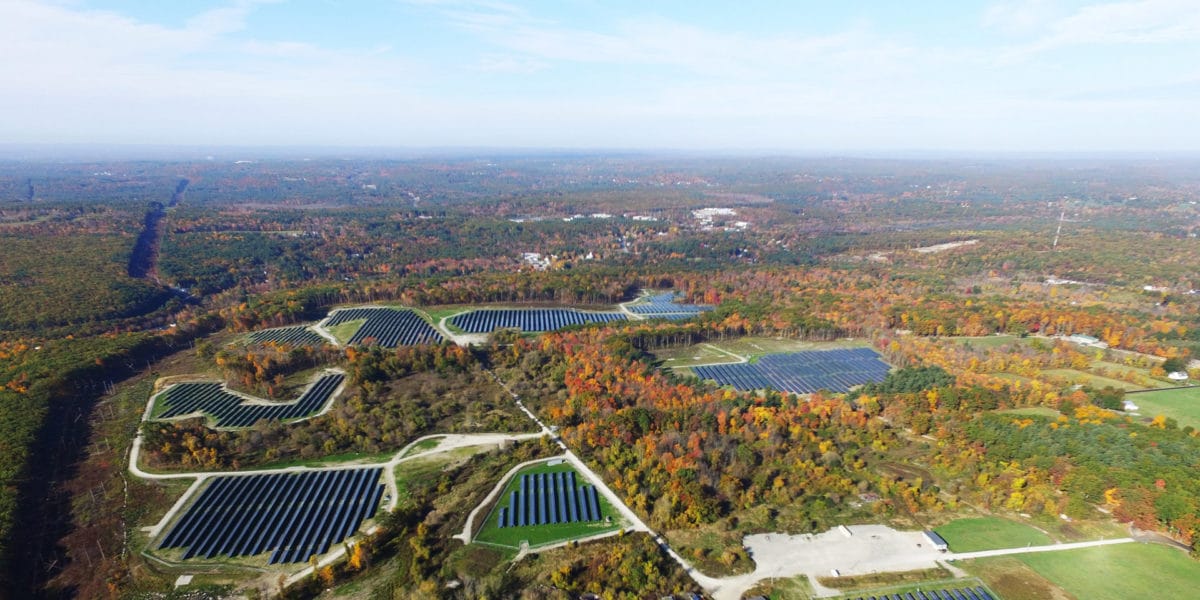Connecticut Governor Dannel P. Malloy made clear his motives:
Make no mistake, we are facing a climate crisis with the future of the planet is at stake, despite President Trump’s refusal to listen to scientists on this matter, the reality is that urgent and significant action is needed to dramatically reduce our dependence on carbon-based energy sources. In addition, we need to increase investments in clean energy like offshore wind, solar, and grid-scale storage. Should we fail to do so, we will fail to prevent the catastrophic outcomes that will result from climate change.
Two nuclear power plants took a bit more than 82% of almost 12 terawatts of electricity in Connecticut’s Request for Proposals (RFP), in addition to 104 MW of offshore wind power and 164 MW of solar power, along with a touch of energy storage.
Nine solar projects were chosen, three of which were in Connecticut, and two of which had energy storage coupled with them. The average price for the solar projects was 4.9¢/kWh.
The original (sometimes entirely redacted) proposals are located on the state website here.
- Montville Energy Center
- Black Hill Point Energy Center (paired with energy storage)
- Gravel Pit Solar in Connecticut – 20 MWac
- Tilton Heights Energy Center (New Hampshire)
- Steel Mill Solar – 10MWac (New Hampshire)
- Old Mill Solar – 15 MWac (New Hampshire)
- Keay Brook Energy Center (Maine)
- GRE-3-ME-SACO (Maine, paired with energy storage)
- Kennebec PV Partners (Maine)
In October, the RFP netted 71 unique solar power bids, and 33 of them included energy storage.
The two nuclear power plants that bid did so under very different financial situations, with the Seabrook Station in New Hampshire submitting an uncontroversial levelized bid of 3.3¢/kWh.
Millstone is another matter. State officials have stated that Millstone Nuclear Power Station in Connecticut is at “risk of early retirement” due to inability to compete in the regional power market, but it appears that plant owner Dominion is still seeking to wring money out of Connecticut ratepayers.
The state has approved a 10-year contract for about half of Millstone’s output, but is treating this as two separate contracts. For the first few years it will pay a standard “energy-only” price, but for the remaining seven years the final price for electricity from Millstone has not yet been determined.
The state’s Department of Energy and Environmental Protection has directed utilities Eversource and United Illuminating to negotiate with Dominion, the owner of the plant. However, the press release noted that the contract was approved even though Dominion was seeking a return on investment (ROI) above the standard 9%, and even well above the Governor’s rescue rate of 12 to 15% ROI. According to the press release:
Dominion has sought a rate of return that is not in the best interests of ratepayers.
This content is protected by copyright and may not be reused. If you want to cooperate with us and would like to reuse some of our content, please contact: editors@pv-magazine.com.








By submitting this form you agree to pv magazine using your data for the purposes of publishing your comment.
Your personal data will only be disclosed or otherwise transmitted to third parties for the purposes of spam filtering or if this is necessary for technical maintenance of the website. Any other transfer to third parties will not take place unless this is justified on the basis of applicable data protection regulations or if pv magazine is legally obliged to do so.
You may revoke this consent at any time with effect for the future, in which case your personal data will be deleted immediately. Otherwise, your data will be deleted if pv magazine has processed your request or the purpose of data storage is fulfilled.
Further information on data privacy can be found in our Data Protection Policy.